The Pentagon's Fancy New Tactical Nuke Is Now on the B-2 Stealth Bomber
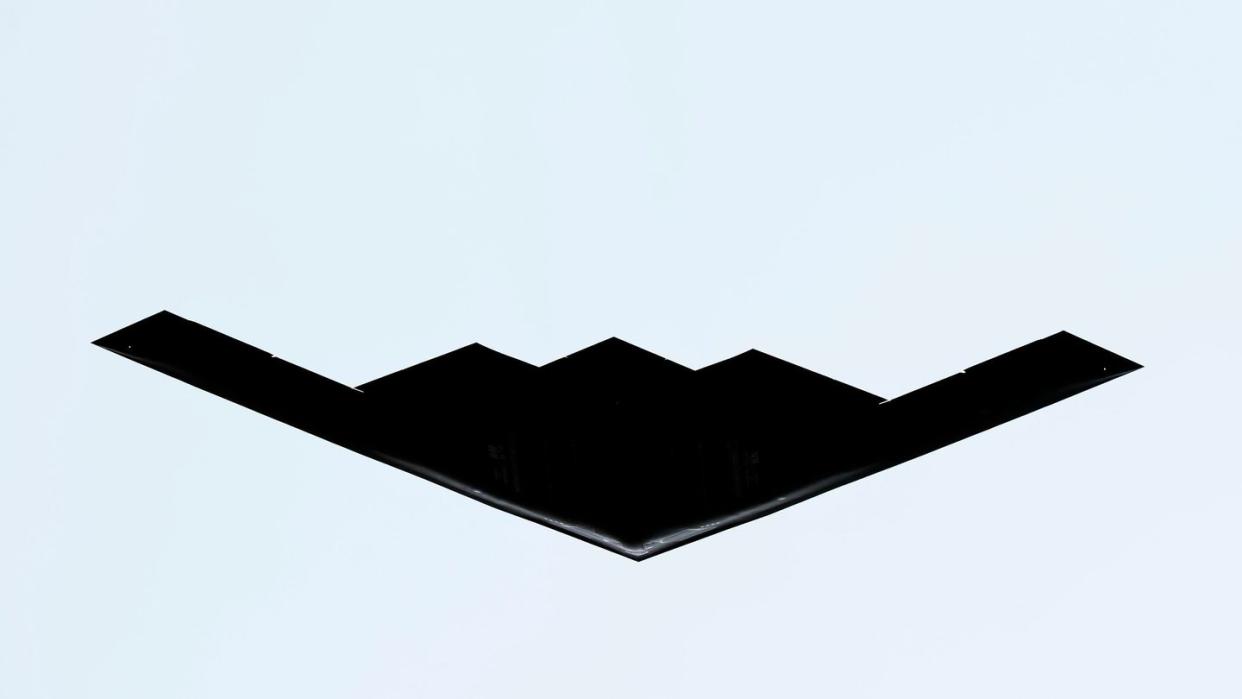
Two years after the November 2021 delivery of the first B-61-12 tactical nuclear bomb, an annual report by the National Nuclear Security Administration (NNSA) has revealed that the Air Force has the weapons ready for operational use on its 20 B-2 Spirit stealth bombers—flying wing jets designed to traverse vast distances and penetrate enemy airspace without being detected. The striking and immensely expensive Spirits are all part of the 509th Bomb Wing, based at Whiteman Air Force Base in Missouri.
The B61-12 actually marks a significant departure from the 12 preceding models of B61 tactical nuclear gravity bombs, the first of which debuted in the 1960s. It’s new tail kit has moving fins and spin-stabilizing rockets that allow it to be launched from a standoff distance and land, on average, within either 30 meters of a designated target (using an inertial navigation system), or within 5 meters (if there’s GPS access). Compare that to the 110-170 meter average error of its predecessor.
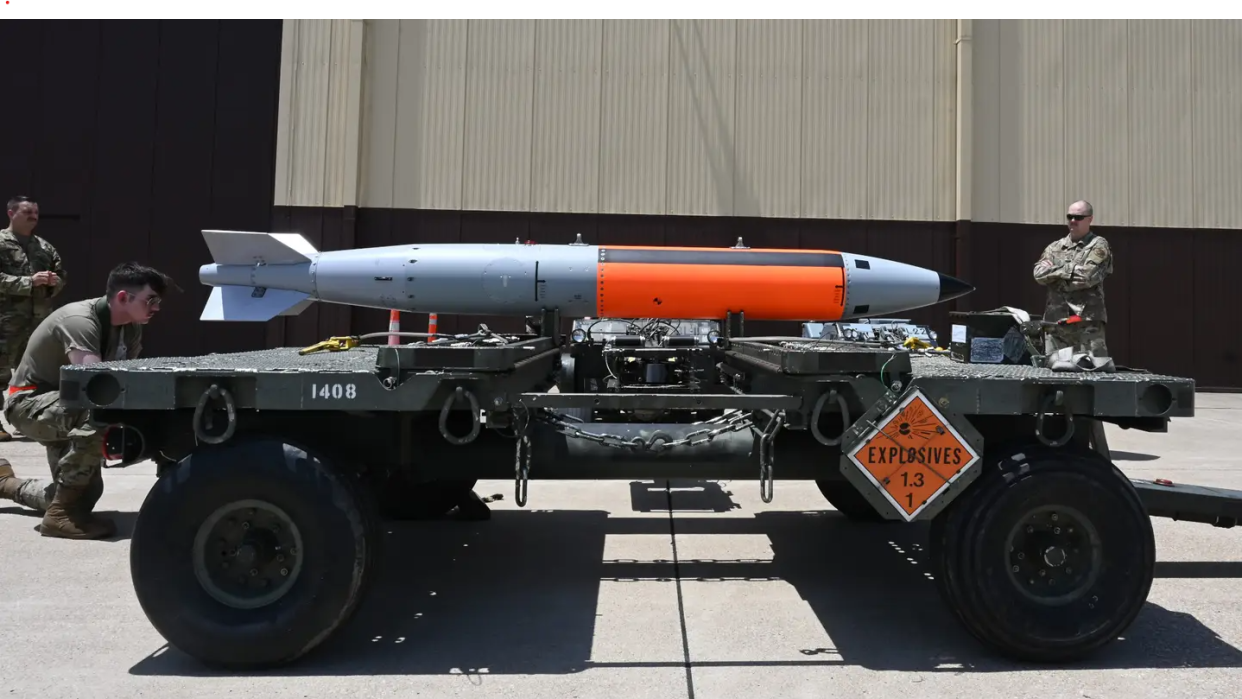
The improved precision means that a smaller nuclear warhead and half the number of tactical nukes overall could be used to achieve the same objectives as previous incarnations, resulting in less collateral damage and radioactive fallout. However, critics of nuclear proliferation have argued that the B61-12 constitutes such a big improvement in effectiveness that it risks dangerously increasing the temptation to use tactical nukes.
By 2025, a total of around 480 B61-12s are expected to be converted from B61-4 bombs—though components from the B61-3, -7, and -10 are apparently mixed in. This ostensible life-extension program (LEP) of the B61-4 wasn’t cheap. A 2012 article estimated that each 825-pound bomb cost more than its weight in gold ($18.4 million in 2022 dollars) at $28 million each. The latest NNSA report estimated a total program cost of $8.3 billion in 2020 dollars (including roughly $1.2 billion still to spend), while outside experts think cost overruns could make the final number closer to $10 billion.
Eventually, the B-61-12 will be certified for use on the B-2’s replacement (the B-21 Raider), as well as on F-35 Lightning II stealth fighters, the widely operated F-16 Fighting Falcon tactical jet fighter, the F-15E Strike Eagle fighter-bomber, and German and Italian Tornado fighter-bombers. Indeed, most of these aircraft have already test dropped B-61-12s.
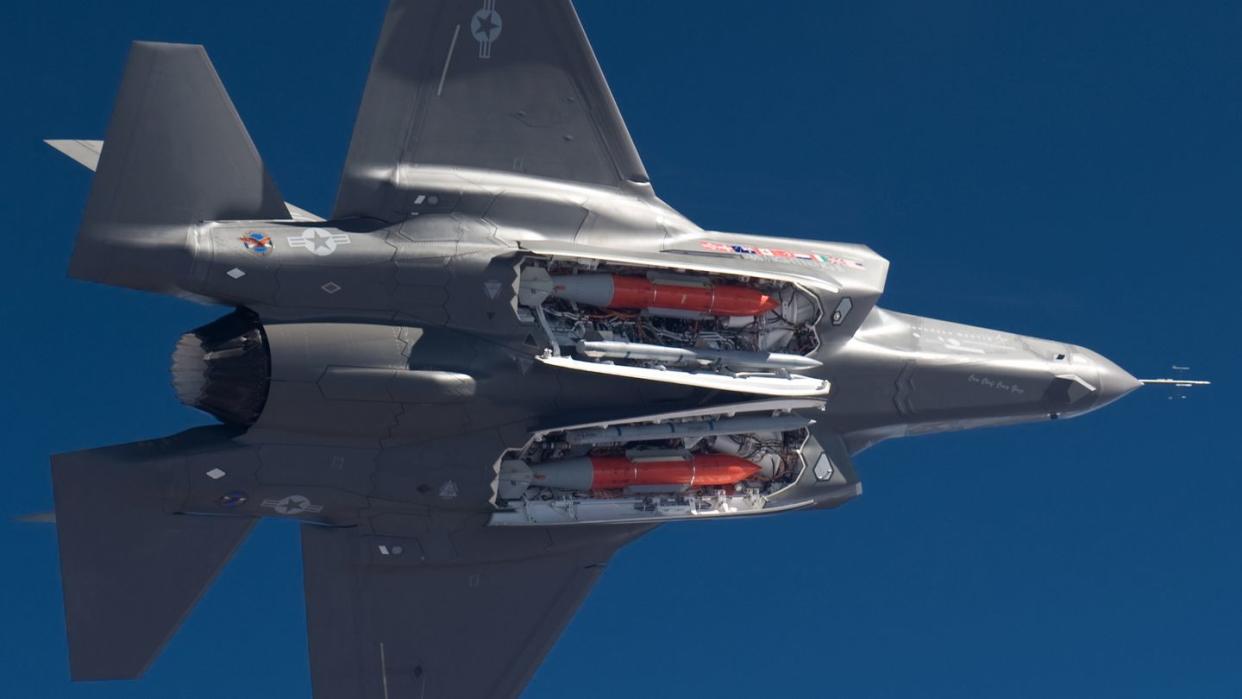
The B61-12 will not, however, be integrated into the Navy and Marine Corps’ FA-18E/F Super Hornet fighters, nor the Air Force’s B-52 and B-1 non-stealth bombers.
The exact reach of the B61-12’s standoff capability is classified, but it is estimated not to exceed 15 miles even under ideal conditions (launched from high altitude) due to the lack of pop-out wings.
Still, even 15 miles would considerably enhance the survivability of non-stealth aircraft, which would need to drop older B61 variants almost directly over the target. This proceedure risked amounting to a suicide run against any target benefitting from unsuppressed modern air defenses. The lack of standoff-range almost meant that there was a greater risk that the dropping aircraft would be caught the blast before it could pull far enough away.
Indeed, the latest air defenses pose such a threat that even stealth aircraft have their survivability and flexibility considerably improved by added standoff range. That explains the prioritization of the B-2 Spirit: it’s the platform that the Air Force would first turn to if it to needed to promptly deliver a powerful tactical nuclear attack at the lowest risk of losses. The B-2 will also be able to leverage the precision-guidance capabilities of the B-61-12—a capability not possessed by the F-16 or Tornado, due to their older electronics.
The B-2’s stealth-optimized AN/APQ-181 radar can also provide crucial targeting capabilities in wartime conditions when GPS is inaccessible or degraded—a technique tested by a B-2 using a dud B61-12 and novel Radar Assisted Targeting Software (RATS) tool in July of 2022.
The future of U.S. tactical nuclear weapons
The B61-12 will replace B61 mod-3, -4, and -7 bombs currently in service that were built between 1979 and 1990. Like these bombs, the B61-12 has an adjustable (or ‘dial-able’) yield, ranging from.3 kilotons to a maximum of 50 kilotons—the latter being nearly 3 times more powerful than the ‘Little Boy’ atomic bomb dropped on Hiroshima.
That’s actually less extreme than the B61-3 (max 170 kilotons) and the strategic B61-7 (max around 350 kilotons). But thanks to improved precision, the 30-60 meter wide crater from a 50-kiloton blast is assessed to reliably destroy bunker-sized targets.
Fifty specialized B61-11 bombs will remain in service alongside the mod 12, due to their specialized ground-penetration capabilities intended for disabling nuclear weapon sites and command centers hundreds of feet below the ground. These 1,200-pound weapons made of high-strength steel have a higher maximum yield of 340 or 400 kilotons.
Meanwhile, in October of this year, the Biden administration announced that it had approved plans for a higher-yield B61-13 model using the B61-7’s warhead to provide “additional options against certain harder and large-area military targets.”
As the B61-12 was originally slated to replace the B61-7, and the overall stockpile of tactical nukes would increase. This means that future production of B61-13s (estimated to total around 50 bombs) would come at the expense of the B61-12s.
The B61-13 may be an administrative maneuver to help retire the B83-1 strategic nuclear bomb, which has a maximum yield of 1.2 megatons (ie. 1,200 kilotons). The B83’s slated retirement was reflexively canceled by the Trump administration, and Biden now faces opposition by House Republicans in trying to re-cancel the B83-1. The B61-13, therefore, may amount to an offered compromise in the form of a modernized substitute for the B83 with a higher max yield than the B61-12.
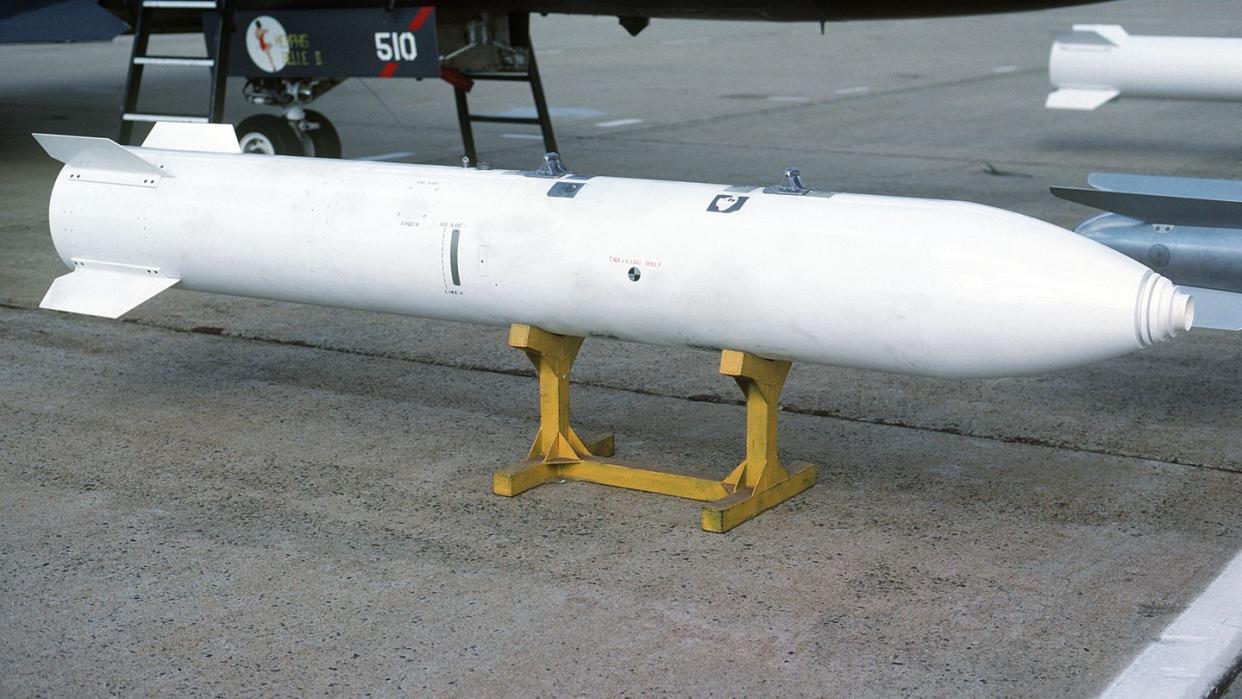
The B61-11, B83-1, and any future B61-13s will only be deployed by B-2 or B-21 bombers—not fighters. It’s worth noting that the collateral effects of these larger-yield weapons are many times greater, making them very hard to employ without significant fallout affecting nearby allies and non-combatants.
The only other non-strategic nuclear weapon in U.S. service is the 8-kiloton W76-2 warhead, which can be loaded into the Trident-D5 missiles on U.S. Navy Ohio-class ballistic missile submarines. It’s estimated that only 25 W76-2s were built, and it’s speculated that each Ohio-class sub may carry one or two missiles armed with W76-2 warheads on their patrol, alongside their much more destructive strategic nuclear payloads.
How and when would B61 tactical nukes get used?
While ‘tactical’ nukes are popular subjects of video games and action movies, their use in real life would only be authorized in extreme circumstances. Ever since the U.S. dropped two atomic bombs on Japanese cities in 1945, there has been a so-far-unbroken taboo against using even the least powerful nukes in combat.
Currently, U.S. tactical nuclear bombs have implications for U.S. national security in two kinds of situations: conflicts with formidable military adversaries (Russia or China), and conflicts with regional powers that have or may soon acquire nuclear weapons capabilities (North Korea or Iran, respectively). The latter of these could still inflict a lot of damage, even though they fall short of a true existential threat.
The primary justification for U.S. tactical nukes may in fact be the deterrence of other countries’ tactical nukes. Russia, in particular, has nearly 2,000 non-treaty-regulated tactical nuclear weapons. They also have a more elaborate doctrine on their potential uses, both regarding limited scale operations for strategic signaling and intimidation (“escalating to deescalate”) and larger scale operations for warfighting (using nukes to win on the battlefield).
Admittedly, a substantial fraction of Russia’s tactical nukes are designed for specialized roles in air-defense, anti-ship, and anti-submarine warfare. And China has not invested in tactical nukes—though, it is in the process of expanding its strategic nuclear arsenal.
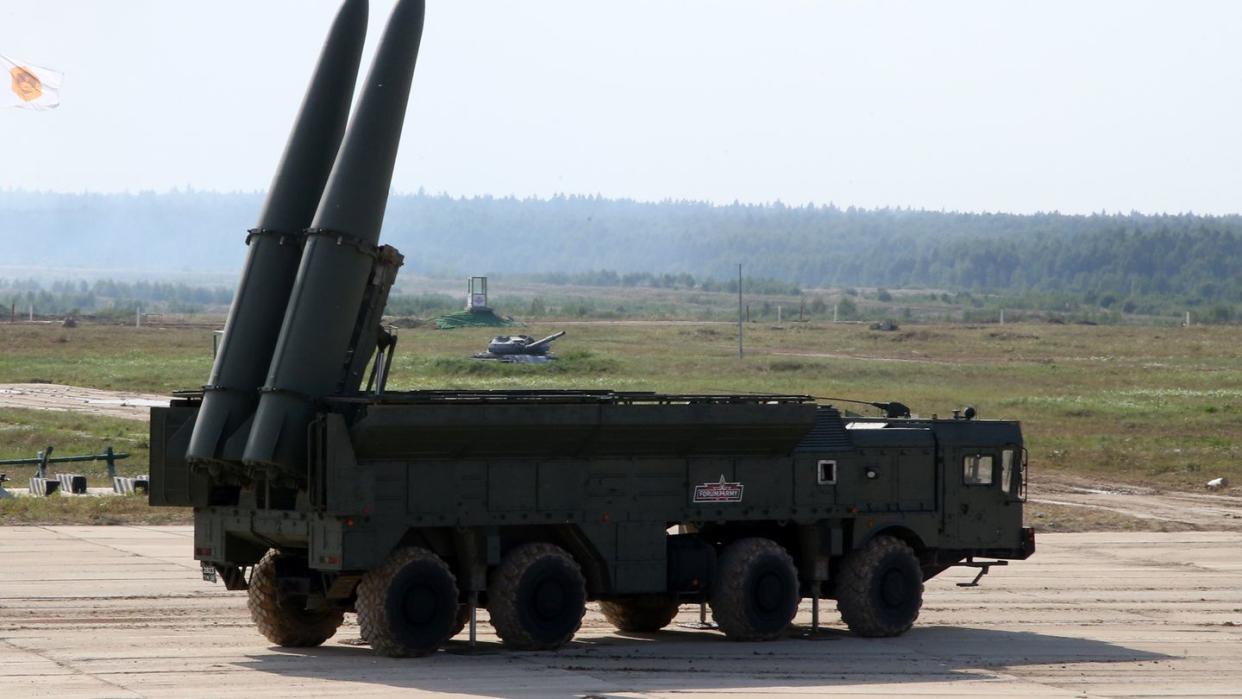
Still, Russian strategists may believe that they can obtain psychological, political, or battlefield advantages using smaller, short-range nukes, cruise missiles, and Iskander ballistic missiles. They may count on an adversary to be unwilling to take the plunge by retaliating with more powerful strategic weapons, which would lead to mutual destruction on a civilization level. Thus, proponents of the U.S.’s tactical nuclear weapons argue that they create an ability to retaliate proportionally against small-scale nuclear attacks, reducing the perceived benefits of initiating such a game of nuclear chicken.
U.S. tactical nuclear gravity bombs also share a strategic deterrence role, as 100 are stored in bases in Belgium, Germany, Italy, The Netherlands, and Turkey for potential carrying by those countries’ F-16 and Tornado jet fighters (and, eventually, F-35s). This diffuses national responsibility for nuclear deterrence across NATO, fostering a band-together ‘an attack on one is an attack on all’ dynamic. It is hoped that this will be enough to deter Russia from thinking that it can politically disintegrate the alliance through nuclear threats.
However, the U.S. also has its own war-fighting concepts for tactical nukes. During the Cold War, these involved pulverizing concentrations of invading Soviet tank divisions, which were feared to have such a numbers advantage that they could prove unstoppable by NATO ground forces.
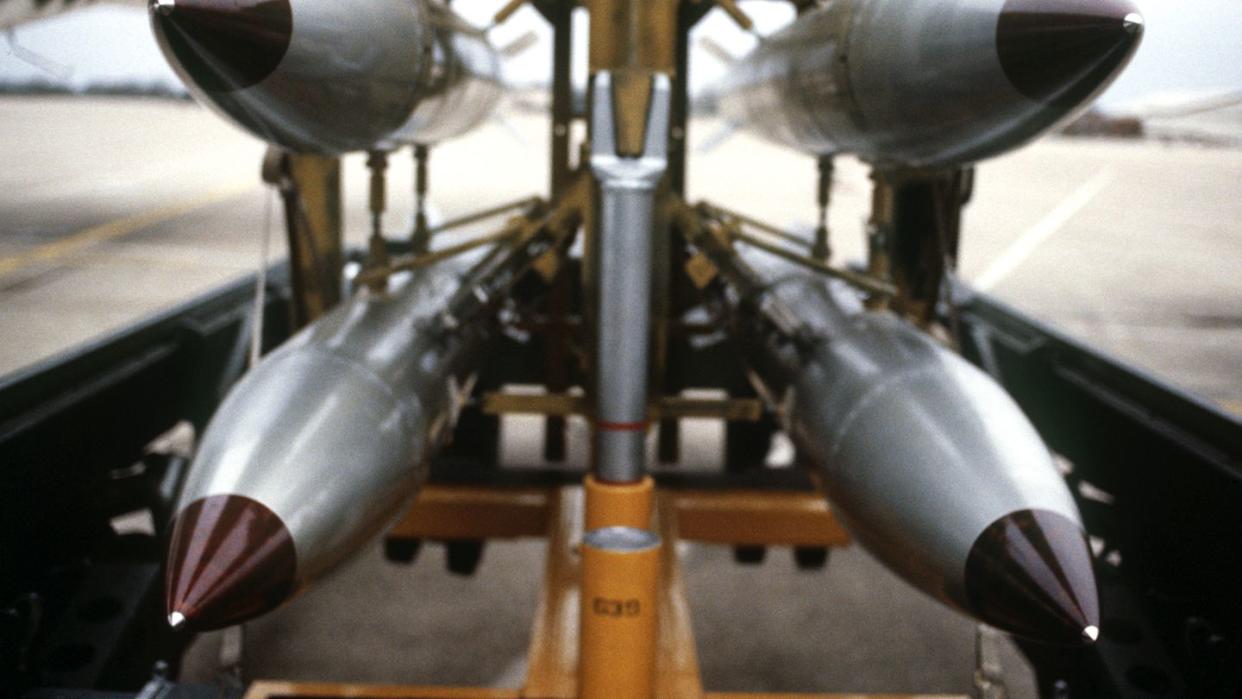
But in the post-Cold War era, the greatest fear is of nuclear weapons themselves (whether tactical or strategic), particularly those ensconced in underground silos that could prove difficult to knock out with conventional weapons. Thus, per doctrine, any future use of U.S. nuclear weapons—tactical or strategic—would likely be mostly pointed at enemy nuclear assets and command-and-control nodes.
Notably, tactical nuclear weapons might be used in response (or, more controversially, in perceived preemption) to a nuclear attack from a ‘middle power’ like North Korea or Iran as part of an effort to knock out nuclear assets—and their command-and-control enablers—before they can strike. The improved precision of the B61-12 and ground-penetrating capabilities of the B61-11 could offer an important advantage in reliably destroying hardened targets.
That said, it is also possible to target enemy nuclear assets using only powerful conventional means, including stealthy JASSM cruise missiles and bunker-busting Massive Ordinance Penetrators . This could be done without taking on the awful collateral effects—and frightening escalation risks—of nuclear weapon usage.
All in all, one should hope that the improved efficiency of the B61-12 is never put to a real-world test.
You Might Also Like
